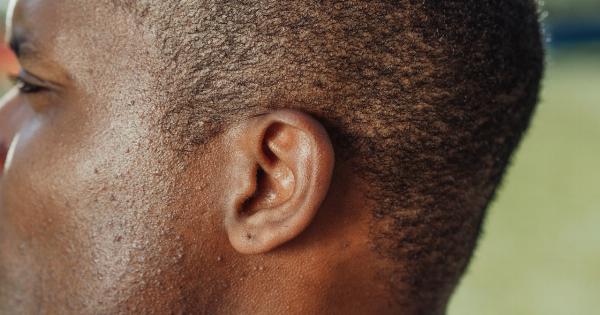Ear pain, also known as otalgia, is a common complaint that can affect individuals of all ages. The discomfort can range from mild to severe, causing significant distress and impairing daily activities.
Understanding the causes, recognizing the symptoms, and exploring treatment options are crucial for managing ear pain effectively. This article aims to provide a comprehensive overview of ear pain, including its potential triggers and various treatment choices.
Common Causes of Ear Pain
Ear pain may arise due to several factors, including:.
1. Ear Infections
Ear infections, such as otitis media (middle ear infection), are a leading cause of ear pain, particularly in children. These infections occur when bacteria or viruses infiltrate the middle ear, causing inflammation and fluid buildup.
Symptoms may include earache, fever, hearing loss, and irritability.
2. Earwax Blockage
Excessive earwax, also known as cerumen, can accumulate and cause blockages in the ear canal. The blockage can result in ear pain, partial hearing loss, tinnitus (ringing in the ears), and dizziness.
3. Sinus Infections
Sinus infections, or sinusitis, can sometimes cause referred pain in the ears. Due to their close proximity, inflammation and pressure in the sinuses can radiate to the ears, leading to ear discomfort.
4. Temporomandibular Joint (TMJ) Disorders
TMJ disorders refer to a variety of conditions that affect the temporomandibular joint, which connects the jaw to the skull. These disorders can cause pain in the jaw joint, facial muscles, and even the ears.
5. Eustachian Tube Dysfunction
The Eustachian tubes are responsible for equalizing pressure in the middle ear. When these tubes become blocked or fail to function properly, it can lead to a painful sensation in the ears, often accompanied by muffled hearing.
6. Dental Problems
Infections or dental issues, such as tooth abscesses, impacted wisdom teeth, or gum diseases, can sometimes cause referred pain in the ears.
7. Foreign Objects
Foreign objects, like small toys or insects, can accidentally enter the ear canal and cause pain and discomfort. It is important to seek immediate medical attention to remove the object safely.
8. Trauma or Injury
Ear pain can also result from trauma or injury to the ear, such as a blow to the head, sudden changes in pressure, or exposure to loud noises. These incidents can damage the eardrum or other structures, leading to pain and potential hearing loss.
9. Swimmer’s Ear
Swimmer’s ear, or otitis externa, is an infection of the ear canal caused by water remaining in the ear after swimming or bathing. It can cause ear pain, itching, redness, and swelling.
10. Tonsillitis
Tonsillitis, the inflammation of the tonsils typically due to a viral or bacterial infection, can cause referred pain in the ears along with a sore throat, difficulty swallowing, and fever.
Symptoms of Ear Pain
The symptoms of ear pain can vary depending on the underlying cause, but common manifestations include:.
1. Earache
An earache, often described as dull, sharp, or throbbing pain, is a prevalent symptom of ear pain. The intensity of the pain can range from mild to severe, and it may be constant or intermittent.
2. Tinnitus
Tinnitus refers to a perception of sound without any external stimulus. It can manifest as ringing, buzzing, hissing, or other phantom noises in the ears and is often associated with ear pain.
3. Hearing Loss
Depending on the cause, hearing loss can accompany ear pain. It may be partial or complete, temporary or permanent.
4. Ear Fullness
Individuals experiencing ear pain may feel a sensation of fullness or pressure in the affected ear. This can be due to fluid buildup or inflammation.
5. Dizziness or Vertigo
In some cases, ear pain may cause dizziness or a spinning sensation, known as vertigo. This can significantly impact balance and daily activities.
6. Fever
If the ear pain originates from an infection, fever may accompany the discomfort. Monitoring body temperature can aid in identifying the underlying cause.
Treatment Options for Ear Pain
Depending on the cause and severity of the ear pain, various treatment options can be pursued:.
1. Over-the-Counter Pain Relievers
Non-prescription pain relievers, such as acetaminophen or ibuprofen, can help alleviate mild to moderate ear pain. It is important to follow the recommended dosage and any age restrictions.
2. Warm Compress
Applying a warm compress or heating pad to the affected ear can help relieve pain and reduce inflammation. Ensure the compress is not too hot to avoid burns.
3. Ear Drops
Ear drops, available over-the-counter or by prescription, can help soften earwax or provide relief from otitis externa. It is essential to carefully follow the instructions and avoid using them if the eardrum is perforated.
4. Antibiotics
If the ear pain is caused by a bacterial infection, a course of antibiotics prescribed by a healthcare professional may be necessary. It is crucial to complete the full course as prescribed.
5. Earwax Removal
If excessive earwax is causing the pain, a healthcare professional can safely remove the blockage using specialized tools or gentle irrigation.
6. Surgical Intervention
In severe cases of ear pain or when other treatments fail, surgical intervention may be required. This can involve procedures to repair a perforated eardrum, remove tumors, or address structural abnormalities.
7. Home Remedies
Several home remedies can help alleviate ear pain, such as using warm olive oil or garlic oil drops, practicing nasal irrigation with saline solution, and maintaining good oral hygiene to prevent dental issues.
Prevention of Ear Pain
While not all causes of ear pain can be prevented, certain measures can reduce the risk:.
1. Maintain Good Ear Hygiene
Regularly clean the outer ear with a damp cloth, ensuring not to insert anything into the ear canal that may push wax deeper or cause injury.
2. Avoid Excessive Noise
Protect your ears from loud noises or use earplugs in noisy environments to prevent damage to the delicate structures within the ear.
3. Treat Infections Promptly
Seek medical attention for any infections, such as colds or respiratory tract infections, that can potentially spread to the ears, causing complications.
4. Dry Ears Thoroughly
After swimming or bathing, gently towel dry the ears to prevent moisture from remaining in the ear canal and leading to swimmer’s ear.
Conclusion
Ear pain can significantly impact an individual’s quality of life, but understanding its causes, recognizing the symptoms, and being aware of the available treatment options can aid in effective management.
Any persistent or severe ear pain should be evaluated by a healthcare professional to determine the underlying cause and receive appropriate care. By taking preventive measures and seeking timely treatment, individuals can find relief from ear pain and safeguard their ear health.





























